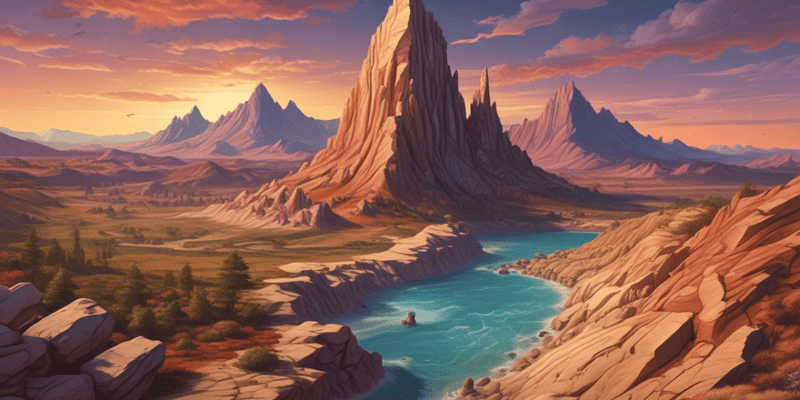Podcast
Questions and Answers
What significant event occurred during the mid-Ordovician period regarding Laurasia and Baltica?
What significant event occurred during the mid-Ordovician period regarding Laurasia and Baltica?
Which continent formed by the late Carboniferous period?
Which continent formed by the late Carboniferous period?
What was the name of the supercontinent that existed until approximately 200 Ma?
What was the name of the supercontinent that existed until approximately 200 Ma?
What geographical feature was formed as a result of the collision between India and Eurasia?
What geographical feature was formed as a result of the collision between India and Eurasia?
Signup and view all the answers
During which geological period did Pangaea begin to break apart?
During which geological period did Pangaea begin to break apart?
Signup and view all the answers
What major oceanic change resulted from the separation of Gondwana and Laurasia?
What major oceanic change resulted from the separation of Gondwana and Laurasia?
Signup and view all the answers
How did the position of continents change from the Tertiary Period to the present day?
How did the position of continents change from the Tertiary Period to the present day?
Signup and view all the answers
Which of the following was NOT a part of the Gondwana Supercontinent?
Which of the following was NOT a part of the Gondwana Supercontinent?
Signup and view all the answers
Study Notes
Supercontinent Formation
- Gondwana Supercontinent existed around the South Pole during the late Cambrian period (514 Ma)
- During the mid-Ordovician Period (458 Ma), Laurasia collided with Baltica, closing the Iapetus Sea
- The continuous collisions in the early Devonian period (390 Ma) resulted in the pre-Pangaea continent
- North America formed by the late Carboniferous period (306 Ma), and Pangaea formed by the Triassic period (255-210 Ma)
Pangaea Breakup
- Pangaea began to break up from 210-180 Ma, a process that continued into the Late Cretaceous period, creating larger oceans
- Continental drift continued into the Tertiary Period, and continents reached their current positions during the Quaternary period.
- Pangaea split into two large landmasses: Gondwanaland and Laurasia, around 160 Ma
- The subcontinent of India moved northward and separated from Gondwana around 140 Ma, initiating the formation of the Himalayan mountain range
- Australia separated from Antarctica around 100 Ma, further breaking apart Gondwana.
- The separation of Gondwana and Laurasia led to the opening of the Atlantic Ocean
Studying That Suits You
Use AI to generate personalized quizzes and flashcards to suit your learning preferences.
Description
Explore the fascinating history of Earth's supercontinents, from Gondwana to Pangaea. This quiz covers significant geological events that shaped continents from the Cambrian to the Quaternary period. Test your knowledge on continental drift, geological time periods, and the formation of mountain ranges.




